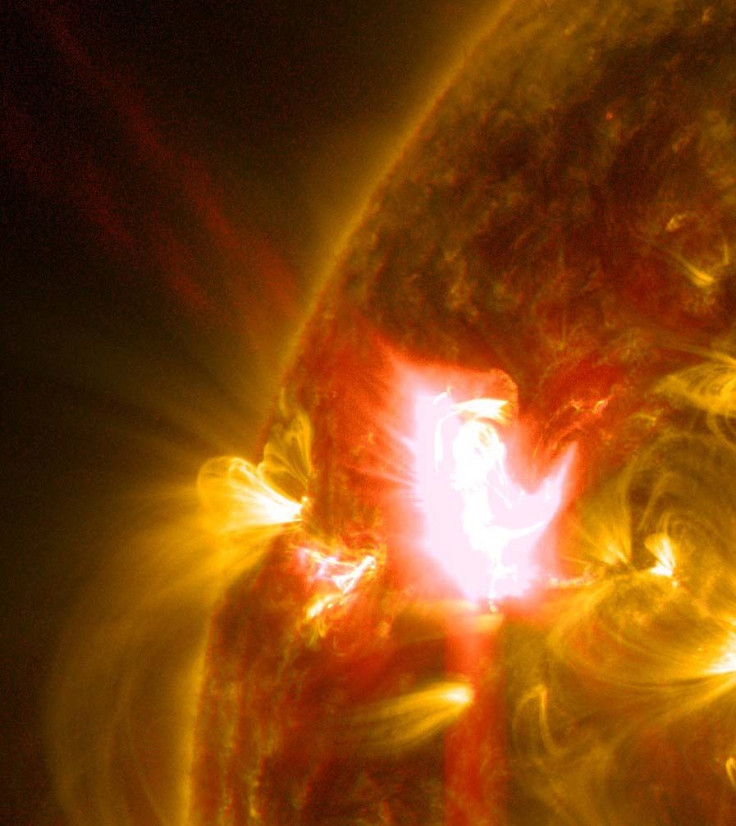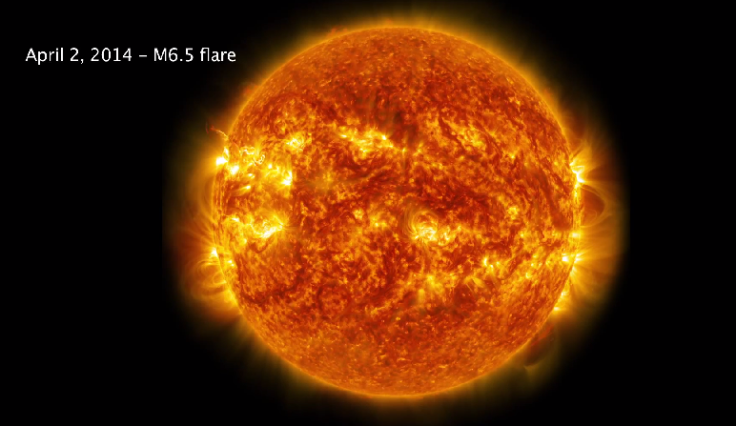Sun Emits M-Class Solar Flare But Did Not Trigger Space Weather, No Upcoming Solar Activity Expected [VIDEO]
Following an X-class solar flare on March 31, the sun emitted an M-class solar flare on April 2. There was a coronal mass ejection associated with the solar flare that hit Earth but didn't cause a geomagnetic storm on Earth.

NASA’s Goddard Space Flight Center released a video of the M-class solar flare on April 4. The space agency’s Solar Dynamics Observatory observed the event, which peaked at 10:05 a.m. EDT on April 2. The solar flare originated from the sunspot AR2027, notes SpaceWeather.com. According to NASA, X-class solar flares are the most powerful type of flares and M-class flares are 10 times less intense than X-class flares. A M6 solar flare is six times more intense than a M1 solar flare.
At the time of the event, the National Oceanic and Atmospheric Administration's Space Weather Prediction Center issued a weak geomagnetic storm watch for April 5, the expected time of arrival for the CME. The CME did hit Earth but it was a weak event and didn't trigger a geomagnetic storm.

The sun emitted an X-class solar flare on March 31. The flare erupted from the sunspot AR2017. Two M-class solar flares erupted from this active region on March 28 and March 30. The Space Weather Prediction Center issued a geomagnetic storm watch but the CME narrowly missed Earth.
According to the agency’s Facebook post, “Unfortunately (or fortunately, depending on how you look at it), it looks like the bulk of the plasma blob from the 29 March CME missed the Earth. Forecasters are not looking for much of a chance of elevated geomagnetic storms for the next couple of days.”
According to Spaceweather.com, no new solar activity is expected as the sunspot regions aren't active.
The video of the M-class solar flare, courtesy of NASA, can be viewed below.
© Copyright IBTimes 2024. All rights reserved.






















